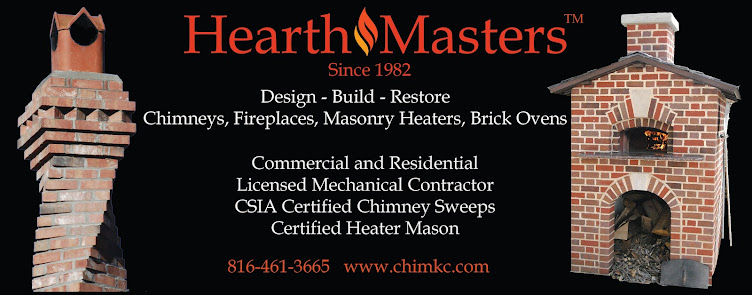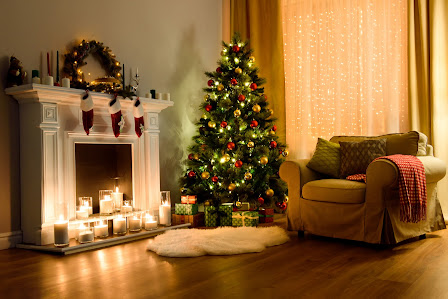Chimney fires can be a devastating event for homeowners, leading to extensive damage and posing serious safety risks. Understanding the causes and implementing preventive measures is crucial for maintaining a safe home environment. This article will explore effective strategies to avoid chimney fires, ensuring that your fireplace or wood stove remains a source of warmth and comfort rather than a potential hazard.
Understanding Chimney Fires
Chimney fires occur when the buildup of creosote—a highly
flammable substance formed from burning wood—ignites within the chimney flue.
This can lead to flames shooting out of the chimney, causing significant damage
to the structure and potentially spreading to other parts of the home.
Recognizing the signs of a chimney fire and understanding its causes is the
first step in prevention.
Causes of Chimney Fires
1.
Creosote Buildup: The primary cause of chimney
fires is the accumulation of creosote, which can ignite when exposed to high
temperatures. All types of wood create creosote.
2.
Improper Burning Practices: Burning unseasoned
wood or using excessive amounts of fuel can lead to incomplete combustion,
resulting in more creosote production.
3.
Obstructions: Debris, animal nests, or blockages
in the chimney can restrict airflow, increasing the risk of a fire.
4. Improper Maintenance: Lack of proper maintenance, including sweeping to remove creosote, and inspections to check the condition of the chimney, can lead to chimney fires.
Regular Inspections and Maintenance
Annual Chimney Inspections
One of the most effective ways to prevent chimney fires is
to schedule annual inspections with a certified chimney sweep. These
professionals will thoroughly examine your chimney for any signs of damage or
buildup and perform necessary cleanings.
What to Expect During an Inspection:
·
A thorough cleaning of the flue to remove soot
and creosote.
· An inspection with a Chimney camera, visual inspection, and a detailed condition report outlining any issues
found.
·
Recommendations for repairs or maintenance.
Cleaning Your Chimney
Regular cleaning is essential to prevent creosote buildup.
Homeowners should consider the following:
·
Frequency of Cleaning: If you use your fireplace
frequently, aim for at least two cleanings per year. For occasional use, an
annual cleaning may suffice. For wood stove burners: at least twice during the season.
·
DIY Cleaning: If you choose to clean your
chimney yourself, ensure you have the right tools, such as chimney brushes and
rods, and follow safety precautions. This is not recommended because homeowners usually will not know how to identify problems with the chimney system.
Proper Wood Burning Practices
Use Seasoned Wood
Burning seasoned wood is crucial for minimizing creosote
buildup. Seasoned wood has been dried for at least six months, reducing
moisture content to 20%, and producing less smoke.
Identifying Seasoned Wood:
· Look for cracks on the ends of the logs.
· The wood should feel lightweight and produce a hollow sound when struck together.
- Use a moisture meter to measure moisture content
Control Airflow
Understanding how to manage airflow in your fireplace or
wood stove can significantly impact combustion efficiency.
·
Adjusting the Damper: Ensure the damper is fully
open when starting a fire to allow for maximum airflow. Once the fire is
established, you can adjust it to maintain a steady burn.
·
Avoid Overloading: Do not overload your
fireplace or stove with wood, as this can lead to smoldering fires that produce
more creosote.
Installing Safety Features
Chimney Caps
Installing a chimney cap can help prevent debris and animals
from entering the chimney, which can obstruct airflow and increase fire risk.
·
Benefits of a Chimney Cap:
·
Keeps out rain and snow, reducing moisture
buildup.
·
Prevents animals from nesting in the chimney.
Monitoring Fire Conditions
Use a Chimney Thermometer
A chimney thermometer can help you monitor the temperature
of the flue gases. Keeping the temperature within the optimal range (300-500
degrees Fahrenheit) can help prevent creosote buildup.
·
Signs of Overheating: If the thermometer
indicates temperatures above 500 degrees, reduce the amount of wood being
burned or adjust the airflow.
Recognize Warning Signs
Being aware of the signs of a chimney fire can help you act
quickly if one occurs. Look for:
·
Loud roaring or popping noises from the chimney.
·
Flames or sparks shooting from the chimney top.
·
Smoke suddenly backing up into the home.
Emergency Preparedness
Know What to Do in Case of a Chimney Fire
If you suspect a chimney fire, it’s essential to act
quickly:
- Call Emergency Services: Dial 911 immediately to report the fire.
- Close the Damper: If safe to do so, close the damper to limit airflow and help extinguish the fire.
- Evacuate the Home: Ensure everyone in the home is safe and evacuate if necessary.
- Keep watch for several hours after the fire has been extinguished. Sometimes fires or heat that escape the chimney can ignite nearby combustibles in the walls or attic and smolder for hours.
Keep Fire Extinguishing Tools Handy
Having the right tools on hand can make a difference in an
emergency:
·
Fire Extinguisher: Keep a Class ABC fire
extinguisher near your fireplace or wood stove.
·
Chimney Fire Extinguishers: Consider investing
in specialized chimney fire extinguishers that can be deployed in case of a
fire.
Conclusion
Preventing chimney fires requires a combination of regular
maintenance, proper burning practices, and awareness of potential hazards. By
following these guidelines, homeowners can enjoy the warmth and comfort of
their fireplaces and wood stoves while minimizing the risk of fire. Remember,
safety should always be a priority, and when in doubt, consult with a
professional to ensure your chimney is in optimal condition.
By taking proactive measures, you can protect your home and
loved ones from the dangers of chimney fires, ensuring a safe and enjoyable
heating experience throughout the colder months.
__________________________
Marge Padgitt is a seasoned veteran in the chimney industry, with over 40 years of experience. She is the author of Your House is Killing You, Wood-Fired Heating and Cooking, and The Chimney and Hearth Pro's Resource Book. Reach her at www.chimkc.com or email margepadgitt@gmail.com.


.JPG)

.jpeg)
.jpeg)


.jpeg)








.jpg)




